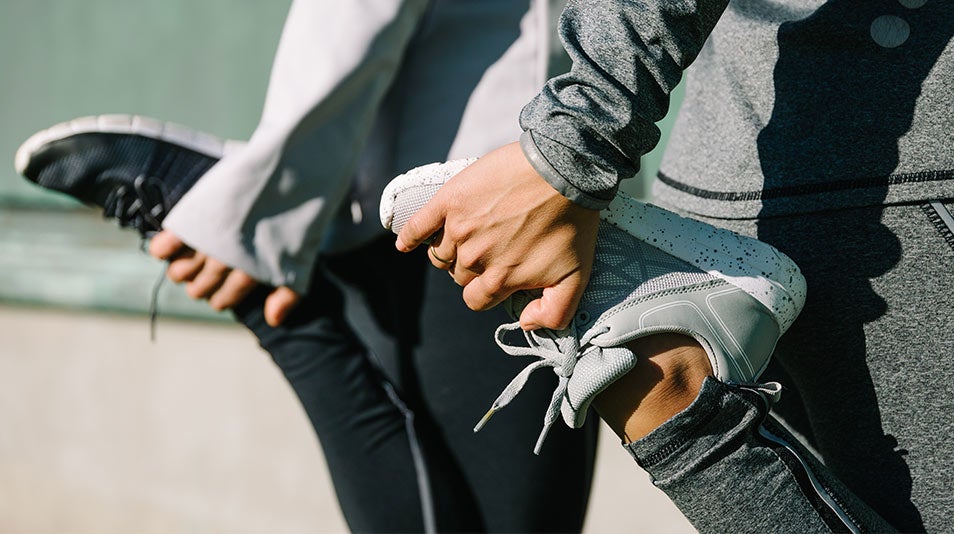Do I really need to warm up and cool down?
by Alec Graves on Sunday 14 April 2024
3 min read
Have you ever felt really sore after a workout, or struggled to get going? Chances are you need to take a good look at your warm-up and cool-down techniques.
And yes, both are a necessity.
The good news is that your warm-up and cool-down should be the easiest parts of your workout – and they’ll go a long way to helping you get the most out of your sessions.
Why it’s important to warm-up for your workout
Workouts are a kind of stress – a good kind of stress – but still stress.
A proper warm up ensures that your body is ready to handle whatever you’re about to throw at it. This means slowly introducing effort and giving your body time to react.
When you start exercising, your body quickly begins elevating your heart rate and pushing oxygenated blood to your most active muscles. This blood gives your muscles what they need to unlock glycogen stores and the energy you need to perform.
This process:
- Shrinks the risk of injury,
- Readies the body for a more intense effort,
- Ensures you’re mentally ready to go.
You’ll know you’ve warmed up when you notice you’re starting to sweat and maybe even feeling a little buzzed!
What does an effective warm-up look like?
Firstly, don’t rush it! A warm-up is about waking your body up, not wearing it out. The golden rule is to start slow and ease into each movement.
Different kinds of workouts call for different warm-ups. If you're going for a run, start with a brisk walk, then gradually ease into a jog. If you’re pumping iron in the gym, try gentle dynamic stretches to open your range of movement gently.
If you have any nagging injuries, it helps to include some movements to warm-up that part of your body. An example might be warming up your shoulder by slowly rolling your arms forward and back, up and down, and in circles in a controlled way.
Your warm-up should also match how you're feeling. Some days, you might need more time to get into the groove, and that's totally fine. On those days, it can be helpful to focus on your breathing while you get started – a little like meditating!
Why it’s important to cool down after your workout
So, you’ve crushed your workout. Nice! But don’t dash off just yet – it’s time for your cool-down. This is where you take a few minutes to catch your breath and allow your body the chance to return to normal.
When done well, cooling down can help prevent soreness, stiffness, and cramps. It does this by promoting oxygen-rich blood flow through your muscles. This process also removes waste products, such as lactic acid, that build up during your workout.
What does a cool-down look like?
Now, how do you cool down without it being a snooze fest? You start by gradually dialling down your workout intensity.
If you've been running, shift down to a jog, then a walk, and then some gentle movement and stretching of your legs and core. If you’ve been lifting weights, you can settle into some long, slow static stretching while you’re catching your breath.
Don’t be afraid to hang out in each stretch for anywhere up to 30 seconds or even a minute. Just don’t push your range of motion too far. You don’t want to be feeling any sharp pain, and you should stop a stretch immediately if that happens. To learn more about getting a good stretch in, check out this blog about our Reformer Pilates classes.
And hey, remember to rehydrate and refuel with water, electrolytes, and your favourite post-workout snack.
Rest and recover with Virgin Active
Rest and recovery is where you get the real benefits of a workout. Which is why we’re as big on winding down as we are on working out. Find out for yourself with a free trial and elevate your wellness journey today at Virgin Active.
Related articles
Nourish
2 min read
Understanding nutrient density (and why it matters)
Move
3 min read
The ‘I don’t feel like working out’ plan
Unwind
3 min read
Can rest days make you stronger?
Enjoying our blog?
Sign up to our newsletter to get updates on training, healthy living, news and events.





